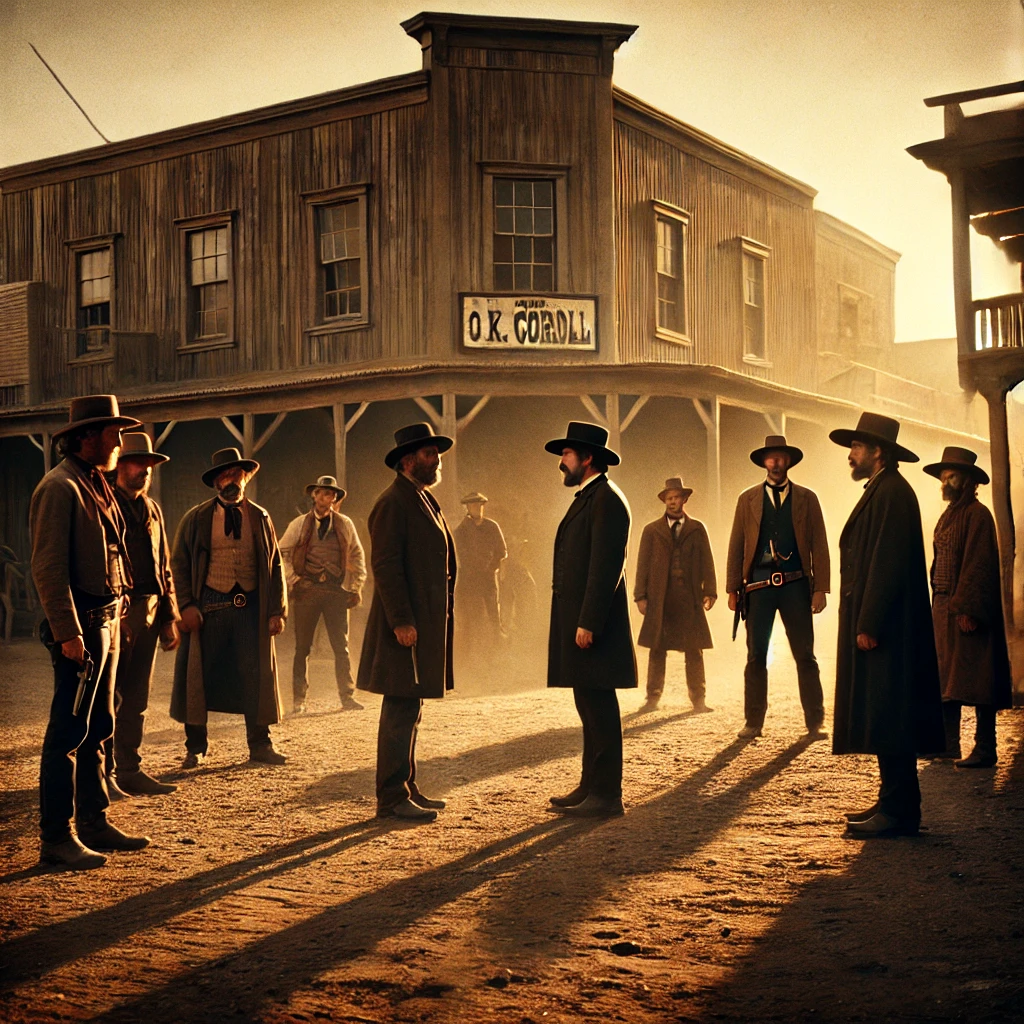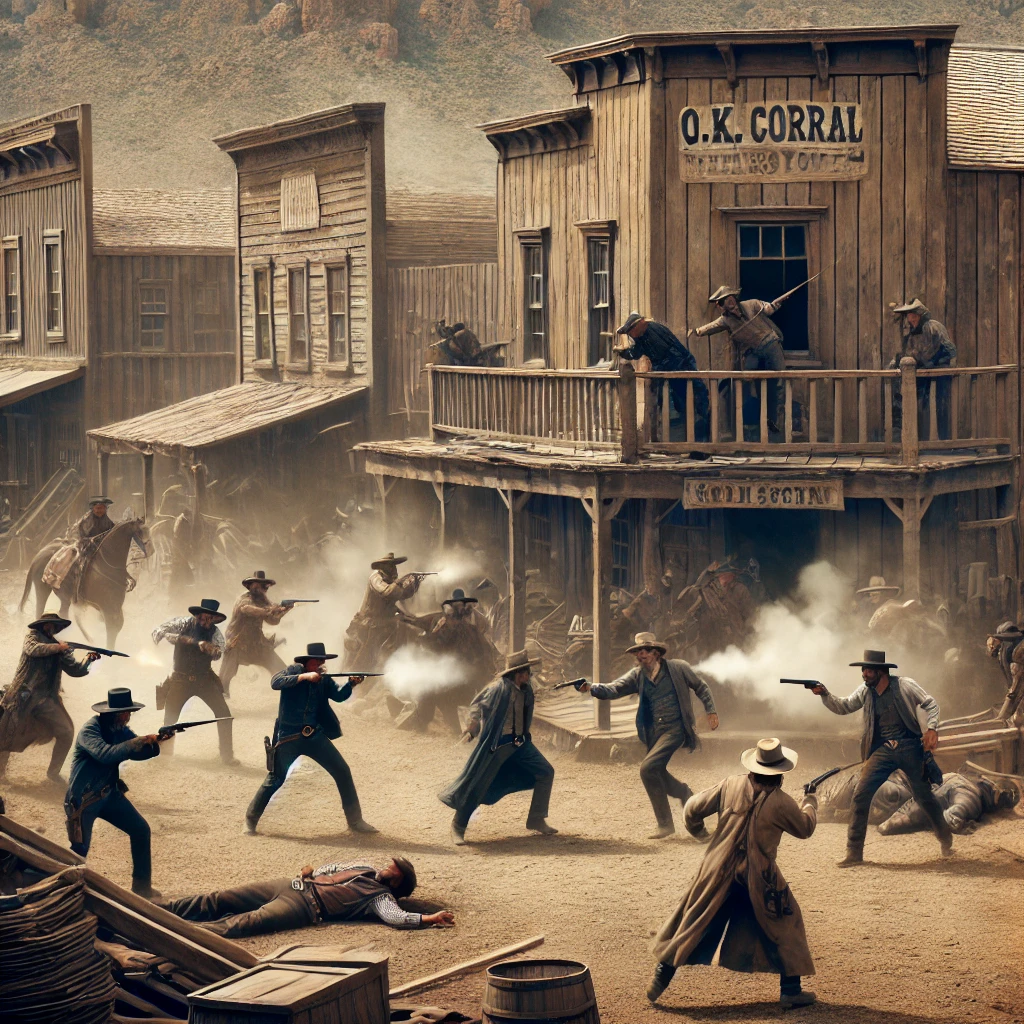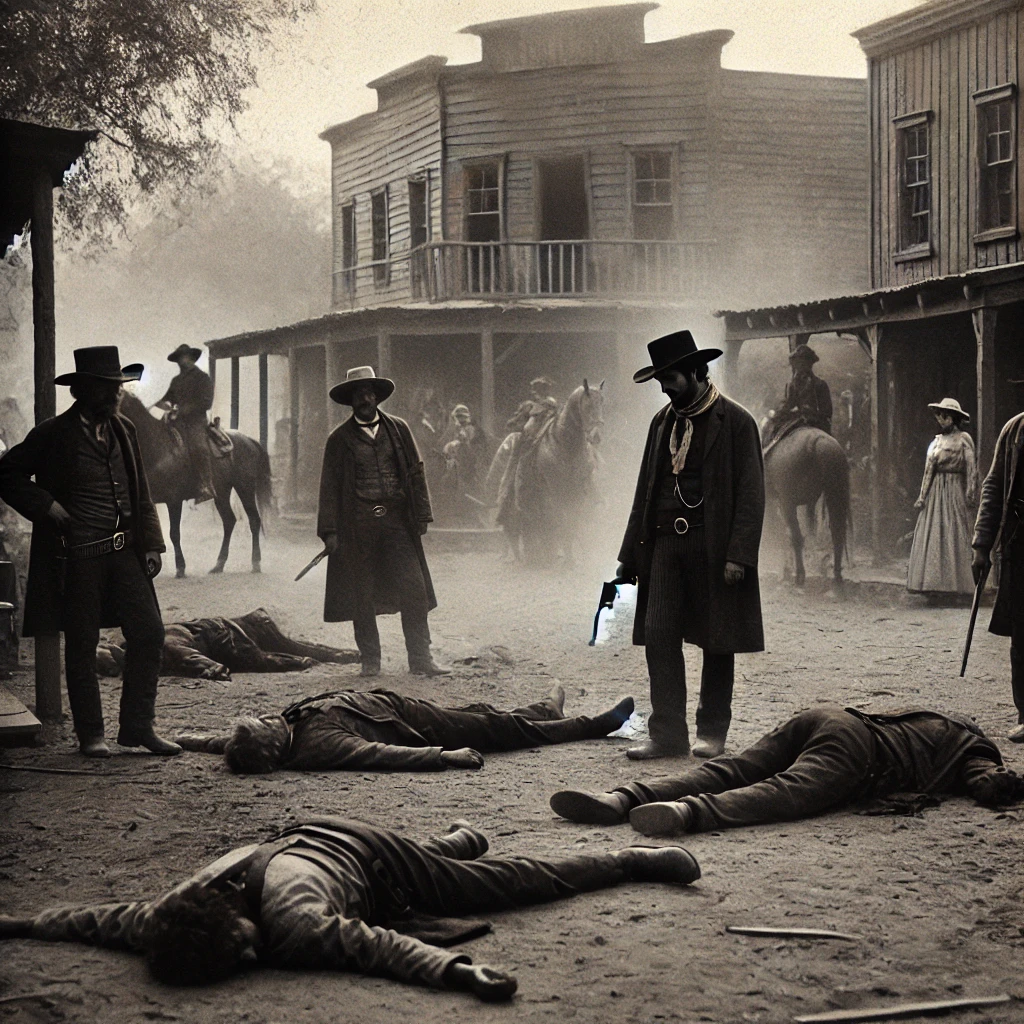On October 26, 1881, one of the most famous gunfights in American history took place at the O.K. Corral in Tombstone, Arizona. This dramatic confrontation between lawmen and a group of outlaws, often romanticized in literature and film, has become a symbol of the Old West and the enduring struggle between law and lawlessness. The shootout not only left a lasting legacy on American folklore but also influenced perceptions of justice and order in the lawless frontier.

The Context of the Old West
The late 19th century was a tumultuous time in the American West, marked by rapid expansion, conflict, and the quest for fortune. Tombstone, founded in 1879 during a silver mining boom, attracted a diverse population seeking wealth and opportunity. However, the town also became a hub for criminal activity, leading to tensions between law enforcement and outlaws.
The Earp brothers—Wyatt, Virgil, and Morgan—were prominent figures in Tombstone, known for their roles as lawmen striving to maintain order amid rampant lawlessness. They found themselves at odds with the Clanton and McLaury families, who were entrenched in the cattle-ranching business and had a reputation for illegal activities. The mounting tensions between these two factions set the stage for the violent confrontation at the O.K. Corral.

The Shootout
The shootout at the O.K. Corral erupted on the afternoon of October 26, 1881, after a series of escalating confrontations. Wyatt Earp, along with his brothers and friend Doc Holliday, confronted the Clantons and McLaurys, leading to a fierce gunfight that lasted approximately 30 seconds. The Earp brothers and Holliday were armed with revolvers, while the outlaws were reportedly armed with shotguns and rifles.
In the chaos, three men were killed: Tom and Frank McLaury and Billy Clanton. The lawmen sustained injuries, with Virgil Earp and Morgan Earp shot in the exchange. The shootout was a watershed moment, encapsulating the volatile atmosphere of the Old West and reflecting the constant struggle for power and control over law and order in a rapidly changing society.
The Aftermath and Legal Consequences
In the immediate aftermath of the shootout, the Earp brothers faced legal challenges as public opinion became divided. Many viewed them as heroes standing up against lawlessness, while others criticized their actions as an abuse of power. The trial that followed generated significant media attention and further polarized the community. Ultimately, the Earp brothers were acquitted of any wrongdoing, but the events at the O.K. Corral left deep scars in Tombstone and solidified the reputation of both the lawmen and the outlaws involved.

The shootout also had broader implications for the American West. It symbolized the archetypal conflict between good and evil, lawmen and outlaws, which would become a recurring theme in Western literature and cinema. The legend of the O.K. Corral fueled the mythology surrounding the Old West, contributing to the enduring fascination with this period in American history.
The Legacy of the O.K. Corral
The shootout at the O.K. Corral has become a defining moment in American culture, immortalized in countless films, books, and television shows. The story of the Earp brothers and the infamous gunfight has captured the imagination of audiences, shaping the perception of the Wild West as a place of heroism, adventure, and danger. Iconic portrayals, such as the film Gunfight at the O.K. Corral (1957) and the more recent Tombstone (1993), continue to popularize the legend.
Today, the O.K. Corral site remains a popular tourist destination, where visitors can learn about the history of the shootout and its significance in shaping American identity. The event serves as a reminder of the complex dynamics of the Old West, where law and disorder often coexisted, and the consequences of violence could have far-reaching effects on the community.
The shootout at the O.K. Corral on October 26, 1881, stands as a pivotal moment in American history, encapsulating the spirit of the Old West and the ongoing struggle for law and order. This dramatic confrontation not only left an indelible mark on the community of Tombstone but also shaped the narrative of the American frontier. As we reflect on the legacy of this iconic event, we recognize its lasting impact on popular culture and the enduring fascination with the legends of the Wild West. The O.K. Corral remains a powerful symbol of the complexities of justice, heroism, and the American spirit, reminding us of the rich tapestry of history that continues to influence our understanding of the past.
